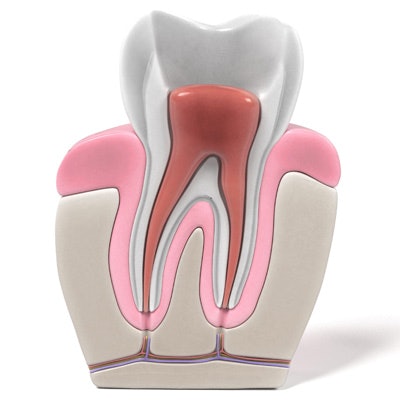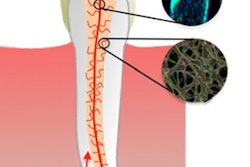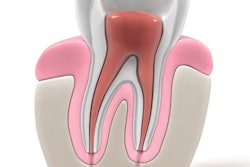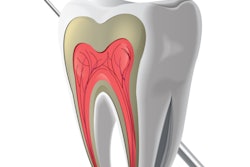
Tooth discoloration can sometimes occur after a regenerative endodontic procedure, such as root revitalization. Researchers conducted a literature review to see how to sidestep this issue.
Their analysis of the literature found that most of the materials used in these procedures had the potential to stain tooth tissue, so they recommended a technique to help reduce or eliminate staining. The review was published in the Journal of Oral Science (August 3, 2019).
The aim of regenerative endodontic techniques is the regeneration of damaged pulp as well as the creation and delivery of replacement pulp-dentin tissues. As there has been evidence of tooth discoloration, researchers wanted to evaluate the potential of materials used in these procedures to cause this discoloration, based on published in vitro studies.
They searched multiple databases and found 11 relevant studies that reported tooth discoloration induced by materials used in regenerative endodontic techniques. All the studies had a low risk of bias.
Analysis of the selected studies showed that most materials used in regenerative endodontic procedures have the potential to stain tooth tissues. These materials include bismuth, iron, aluminum, and magnesium oxides. The researchers attributed the discoloration to the composition of materials used.
The American Association of Endodontists recommends the use of a dentin-bonding agent on dentin in the pulp chamber along with a triple antibiotic paste (TAP) with amoxicillin below the cementoenamel junction to mitigate tooth discoloration, according to the review authors. Other studies concluded that this procedure decreased tooth discoloration, but it did not eliminate the problem, they noted.
While more studies on this topic are needed, the authors recommended a specific procedure to reduce discoloration after regenerative endodontic procedures.
"To decrease tooth discoloration, sealing dentin with a dentin-bonding agent before the placement of a disinfectant paste and barrier materials should be considered," wrote the review authors, led by Irini Fagogeni, DDS, of the Faculty of Dentistry at Pomeranian Medical University in Szczecin, Poland.



















